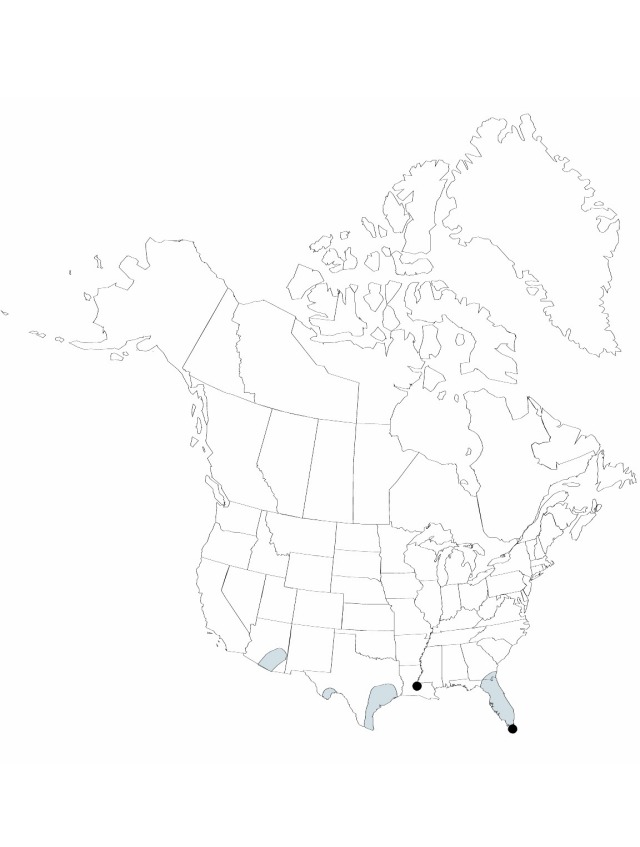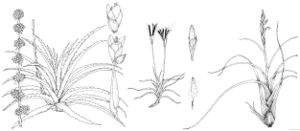Tillandsia recurvata
Sp. Pl., ed. 2 1: 410. 1762.
Plants in dense spheric clusters, flowering to 15 cm diam. Stems short. Leaves 4–10, 2-ranked, recurving, gray, 6–12 × 0.2–0.3 cm, densely pruinose-scaly; sheath pale, elliptic, not inflated, not forming pseudobulb, 4–8 mm wide; blade subulate, terete distally, succulent, margins involute to nearly tubular, apex acute to attenuate. Inflorescences: scape conspicuous, erect, 2–5 cm, 1 mm diam.; bracts 1–2, widely spaced, erect, inconspicuous, nearly foliaceous; sheath of bracts narrowing gradually into blade; spikes ascending, subpalmate, elliptic, compressed, 8–15 ´ 4–6 mm, apex acute; lateral branches absent. Floral bracts laxly imbricate, erect, green, tinged purple, broad (covering all or most of rachis, rachis not visible at anthesis), narrowly elliptic, not keeled, 0.8–1 cm, thin-leathery, apex acute, surfaces densely grayish-scaly, venation even to slight. Flowers usually 2, conspicuous; sepals free, lanceolate, not keeled, 6–8 mm, thin, veined, apex acute, surfaces glabrous; corolla tubular; petals spreading toward apex, violet, elliptic, 0.7–1 cm; stamens included; stigma included, simple-erect. Fruits to 3 cm.
Phenology: Flowering summer.
Habitat: Epiphytic to occasionally among or on rocks (Arizona, Texas), usually in bright exposed habitats
Elevation: 0–1500 m
Distribution

Ariz., Fla., Ga., La., Tex., Mexico, West Indies, Central America, South America
Discussion
Selected References
None.
Lower Taxa
"thin" is not a number.
